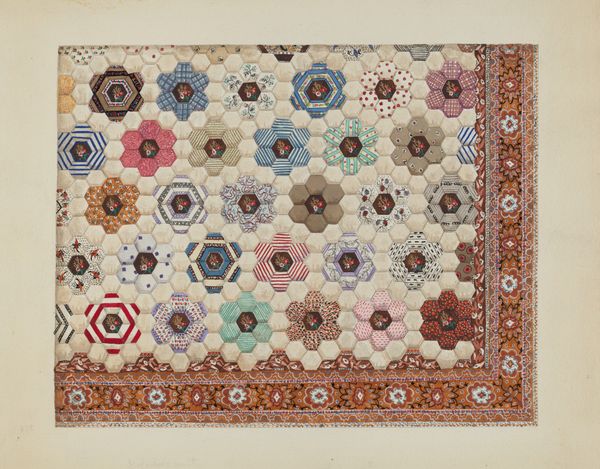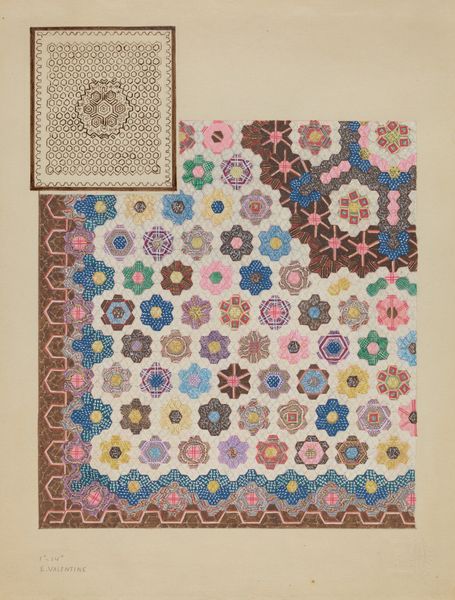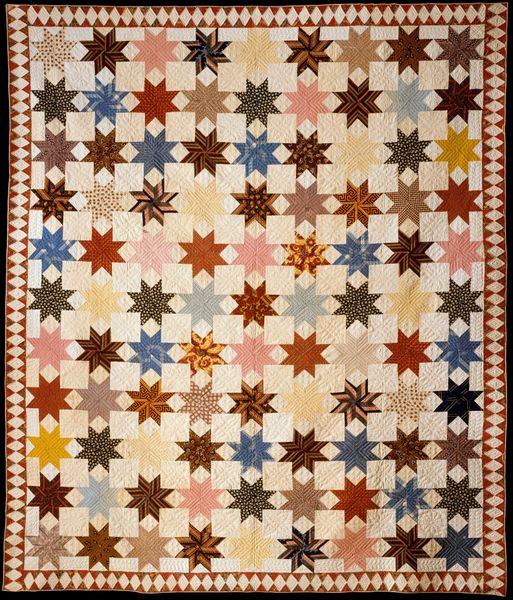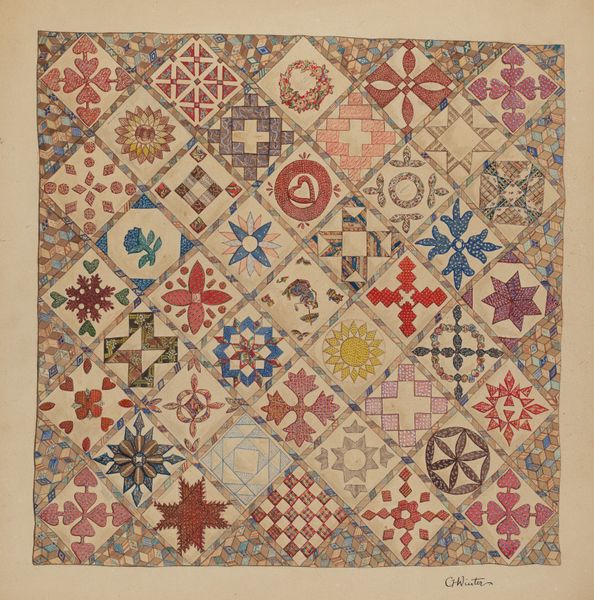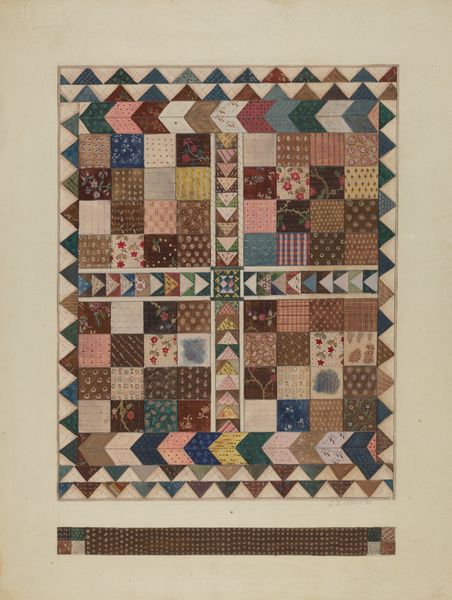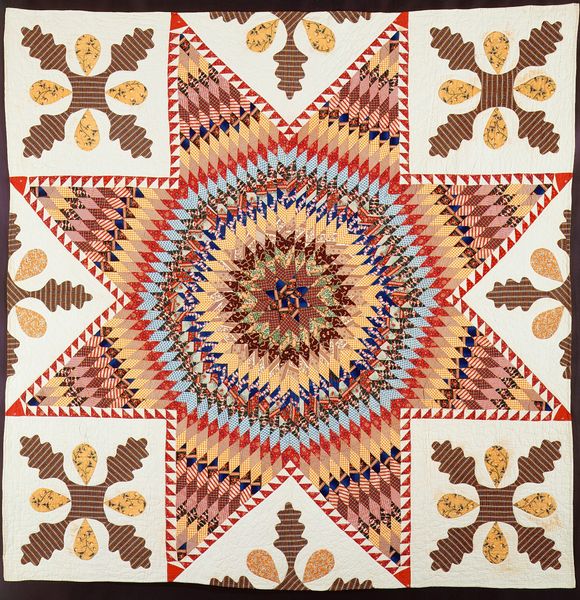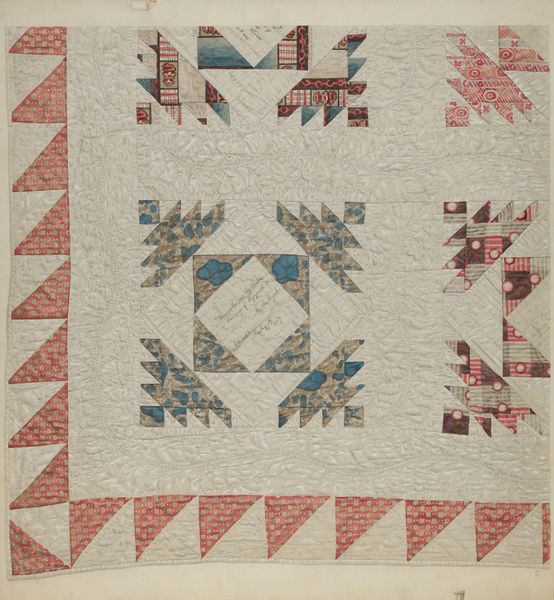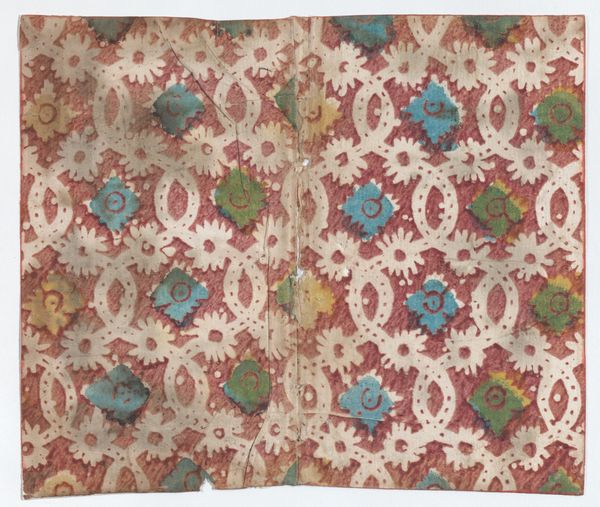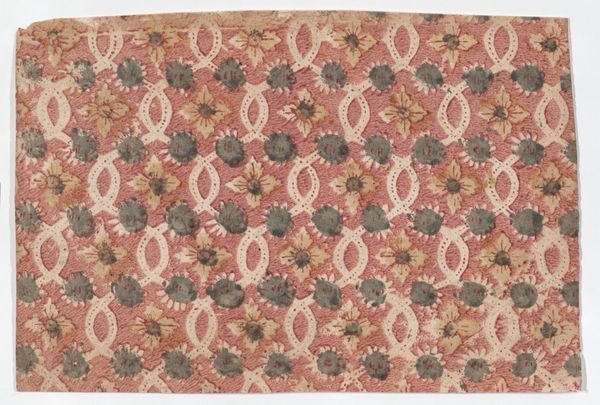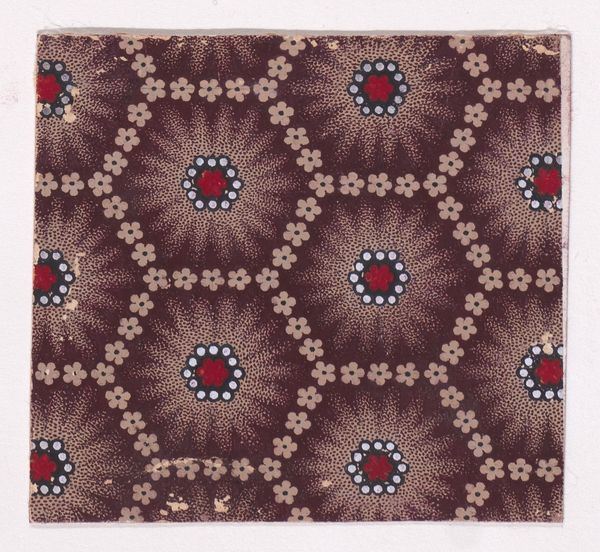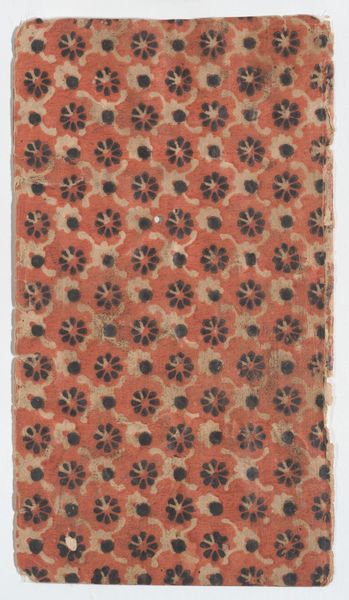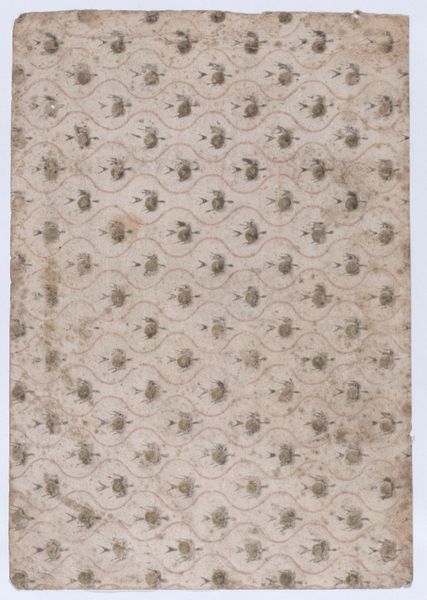
textile
#
textile
#
geometric pattern
#
folk-art
#
geometric
#
united-states
Dimensions: 95 x 85 3/8 in. (241.3 x 216.9 cm)
Copyright: Public Domain
Editor: This quilt, made around 1846, showcases a “Honeycomb” or “Hexagon” pattern, now hanging in the Metropolitan Museum of Art. It strikes me as so comforting and folksy – a really tactile piece of art. What significance do you find in this seemingly simple geometric design? Curator: This isn’t merely a blanket; it's a map of memory, Rebecca Davis wove symbols reflecting her time. The hexagon, echoing honeycombs, speaks of community, industry, and the sweet rewards of labor. Note the central star—perhaps a symbol of guidance, hope, or even remembrance of a loved one, subtly contrasting the repeated geometric figures. Editor: It's interesting that you point out the honeycomb. Now that you mention it, how might the repeating shapes represent societal values of the time? Curator: The careful stitching, the precise repetition of shapes, they all point to a culture that valued order and diligence. Each piece, often made from repurposed fabric, carries its own story, contributing to the larger narrative. Look closely – can you discern any particular fabrics or colors that might suggest more personal narratives embedded within the overall design? Editor: I see a lot of browns, reds, and blues. I would never have thought about them holding little secrets about where these pieces originated, like clothing, or something sentimental... Curator: Exactly! That kind of subtle communication was prevalent. Quilts weren’t just for warmth; they were visual diaries, conveying emotions and experiences that were perhaps too delicate or complex to articulate directly. Editor: That adds a whole new layer to what I see when I look at it now! Curator: Indeed. Symbols help preserve cultural values; in this quilt, Rebecca has pieced together fragments into something far greater and full of memory.
Comments
No comments
Be the first to comment and join the conversation on the ultimate creative platform.
